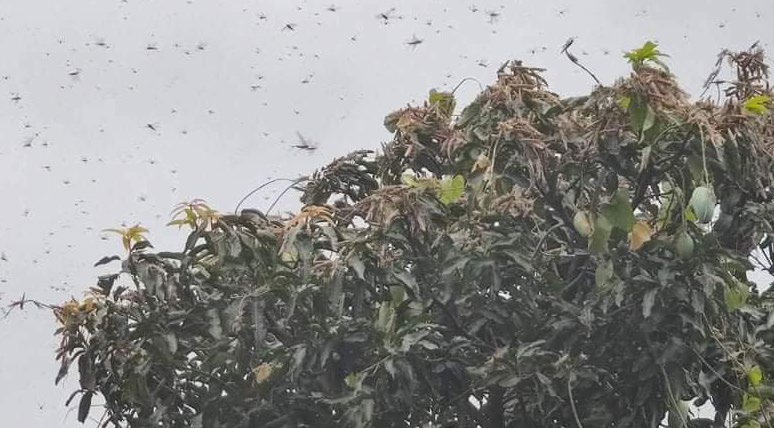Locusts devour crops on 1,100 hectares
KATHMANDU, JULY 3
Desert locusts have damaged crops cultivated on 1,100 hectares of land across the country.
According to the Locusts Information Centre, eight districts have reported damage caused by locusts till date. Of them, Dang is the worst hit and Palpa the least.
The locusts devoured maize and vegetables cultivated on 580 hectares of land in Dang, while they affected cultivation on 50 hectares in Palpa. Locusts have also affected maize, fruits and vegetable farming on 283 hectares in Pyuthan, while maize and vegetables cultivated on 105 hectares in Makawanpur have been damaged by the locusts.
In Arghakhanchi district, locusts have damaged maize and vegetables on 100 hectares of land. Meanwhile, the total damage caused in Sindhuli, Kapilvastu, Rupandehi and Rolpa is yet to be compiled, added the centre.
According to the centre, locusts have been sighted in 52 districts, albeit in small groups.
Issuing a notice today, the centre stated that the possibility of new swarm of locusts entering the country had reduced, with the change in wind direction.
“As per the Meteorological Forecasting Division, earlier the western and south western winds were active duLocusts damagee to which there was a probability of active locust groups from the northern part of India entering Nepal. However, now the wind is moving from the east to the south, which means the probability of locusts invading Nepal has reduced somehow,” reads the notice.
Just two days ago, the centre had issued an alert, stating that a swarm of locusts was heading towards Darjeeling from Bhagalpur and Motihari in Bihar. It had said the swarm could enter Nepal as well. However, the centre stated today that the changing flow of wind had caused a few groups of locusts to fly away from border areas of the country.
Meanwhile, the government is planning to take the Food and Agriculture Organisation's support to fight any future locust invasion. As India is struggling to control the damage caused by locusts, Nepal will remain at a high risk of pest entry.
A version of this article appears in e-paper on July 4, 2020, of The Himalayan Times.






